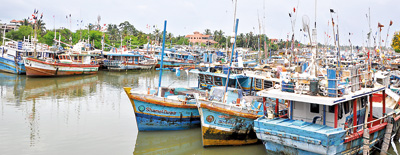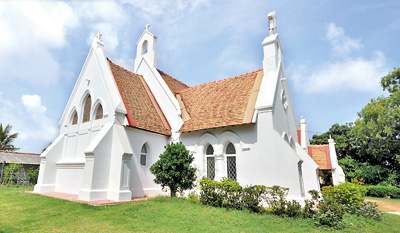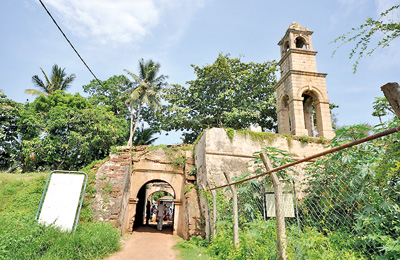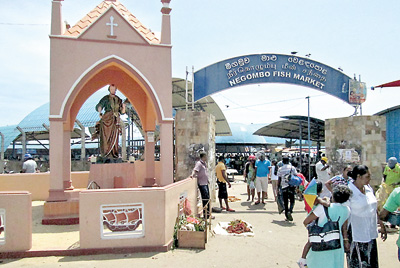The coastal city of Negombo
Negombo, a vibrant coastal city located some 38 kilometres North of Colombo, is also referred to as Little Rome due to the large number of Roman Catholic Churches and statues of Catholic saints found in almost every street you take a stroll on. Negombo (Mee Gamuwa in Sinhala) derived its name during King Kavantissa’s time when giant Velusumana was entrusted with a mission to find a massive bee hive to satisfy a craving of the pregnant queen Vihara Maha Devi.
After an endless search, Velusumana managed to locate an enormous bee hive in a boat parked in the Negombo beach. The place, which was thereafter referred
to as ‘Mee Gomuwa’ had later on, become Mee Gamuwa (Negombo).
Today the Funday Times travel series will bring you some of the interesting locations to visit and things to do, in Negombo. Enjoy!
Negombo Lagoon
Negombo lagoon, on Pitipana Road, is a picturesque scene. Thousands of colourful boats and trawlers anchor on the lagoon from wee hours of morning to unload the
previous day’s catch. The lagoon is rich with mangroves and water bird varieties and for this reason boat rides along the lagoon have become one of the ‘things to do’ among the visitors to Negombo.

St. Stephen’s Anglican Church
A Dutch period church which is said to be over 300 years, this is built on an artificially mounted hill. During the British period it was taken over by the Church of England and subsequently given to the Church of Ceylon.
During the 1880s, missionaries who came from England have also stayed in the premises while they engaged in spreading the religion in the area. The church has been revamped, maintaining the architectural facade and even today, you find some of the Dutch period, timber used for the roofs and tiles in the altar area remaining, according to the church sources.

Negombo Fort
Proceeding down Custom Street, you come across the Fort, which is believed to have been first built by the Portuguese. However, with the Dutch invasion, the structure had been modified according to Dutch architectural features. The Dutch used to store cinnamon collected from all over Negombo here and trade them to various parts of the world, via Hamilton Canal.
The stables built inside the Fort were later on used by the British to house the prisoners and it was through the tunnels inside the Fort that the prisoners were transferred to the Hamilton Canal. One of the openings of the tunnel is still partially visible, though covered with shrubs. Currently part of the Negombo Fort serves as the prison.
The old District Courts premises in the Fort, is believed to have been used as a bungalow during the Dutch and British periods, while inside the Fort is also a dilapidated structure of a Clock Tower that has been built by the British in commemoration of Queen Victoria’s Jubilee celebrations.

Buzzing Fish Market Located in close
proximity to Esplanade play ground also known as the Kotupittaniya, this is an ideal venue to get hold of a fresh fish variety of one’s choice. At the entrance to the Fish Market is a statue of St. Peter – considered to be the Patron Saint of Fishermen. The place is frequented by tourists and locals who come there as early as 6 o’clock in the morning, to hover around the stall taking a glimpse of the fresh fish available for the day. The market place has about 300 huts operating from 6 a.m. to 6 p.m., from Monday to Saturday.
Behind the fish market, on the beachside is where female folk cut and chop up the fish for the process of drying, with rows and rows of mats of drying, laid all over the beach.

Bodhirajaramaya Temple in Angurukaramulla
This temple built in 1868, is also known as the Angurukaramulla temple. It derived its name as it was surrounded by a small community that engaged in producing charcoal (anguru) for various industrial purposes.
In the temple’s mural chamber are; statues, art and wall paintings that belong to the 18th – 19th century. With a mix of Kandyan period art with the European mural
traditions, it reflects the early stages of the country’s temple painting traditions.
Catamaran sail boats in Kuttiduwa
Ideal for the adventurous traveller, Catamaran sail boat rides are fast gaining popularity among visitors to Negombo. This truly is a thrilling sailing voyage, along with the fishing crew to flavour that traditional fishing experience.
Catamaran photography is also another popular activity among photo enthusiasts, as sail boats returning from the sea, during sunset, creates a scenic view.


